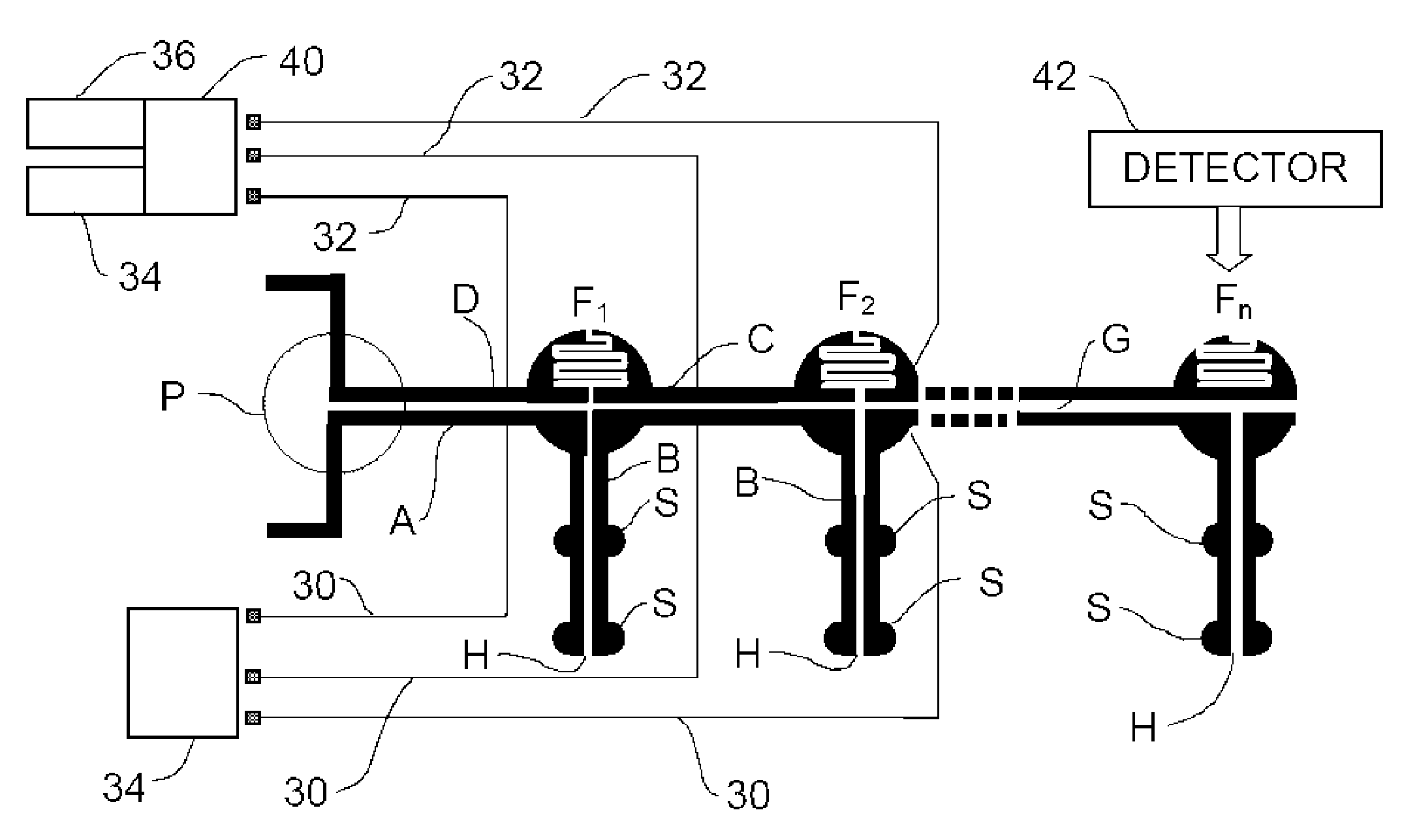Integrated microfluidic transport and sorting system
a microfluidic and integrated technology, applied in the direction of fluid pressure measurement, liquid/fluent solid measurement, peptide measurement, etc., can solve the problems of complex closed-channel microfluidic system structure, large on-chip valving and flow control device, and quite sensitive dielectric fingerprints
- Summary
- Abstract
- Description
- Claims
- Application Information
AI Technical Summary
Benefits of technology
Problems solved by technology
Method used
Image
Examples
Embodiment Construction
[0051] In this patent document, “comprising” is used in its inclusive sense and does not exclude other elements being present. Also, the indefinite article “a” before an element does not exclude another of the element being present. The word “particle” includes any substance, including an inorganic material, liquid droplet, molecule such as DNA, RNA or other subcellular components, or cell, that is capable of being affected by a dielectrophoretic field. “Open” means free from lateral constraint by solid objects except for constraint by a single supporting surface that provides lateral constraint in one direction.
[0052] In an exemplary embodiment of the invention, DEP and EWOD microfluidics serve as a controllable plumbing system, dispensing, transporting, and manipulating droplets of biological media containing cells and cellular components as well as chemicals and washing solutions needed to perform prescribed cell separation processes. Droplet manipulation steps are conducted fir...
PUM
| Property | Measurement | Unit |
|---|---|---|
| pressure | aaaaa | aaaaa |
| voltage | aaaaa | aaaaa |
| width | aaaaa | aaaaa |
Abstract
Description
Claims
Application Information
 Login to View More
Login to View More - R&D
- Intellectual Property
- Life Sciences
- Materials
- Tech Scout
- Unparalleled Data Quality
- Higher Quality Content
- 60% Fewer Hallucinations
Browse by: Latest US Patents, China's latest patents, Technical Efficacy Thesaurus, Application Domain, Technology Topic, Popular Technical Reports.
© 2025 PatSnap. All rights reserved.Legal|Privacy policy|Modern Slavery Act Transparency Statement|Sitemap|About US| Contact US: help@patsnap.com



